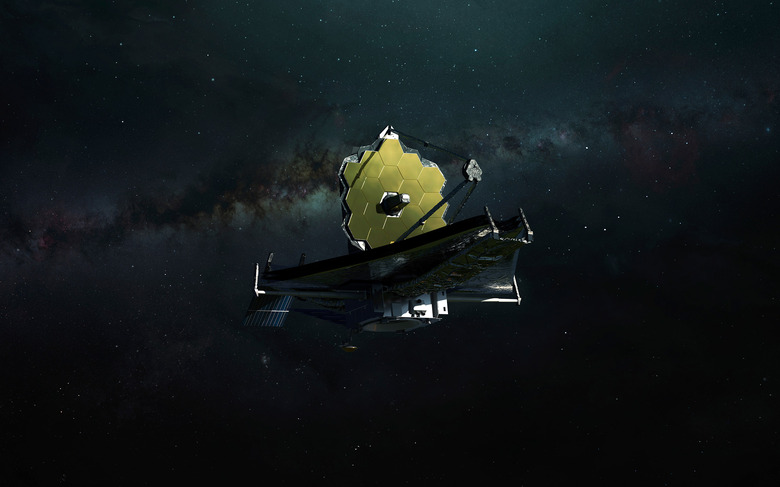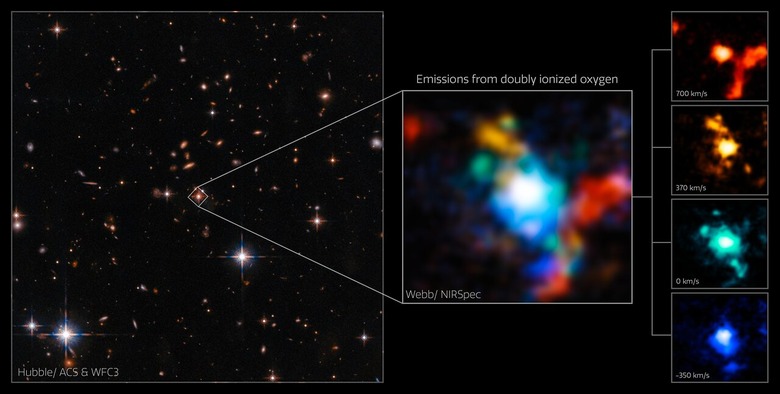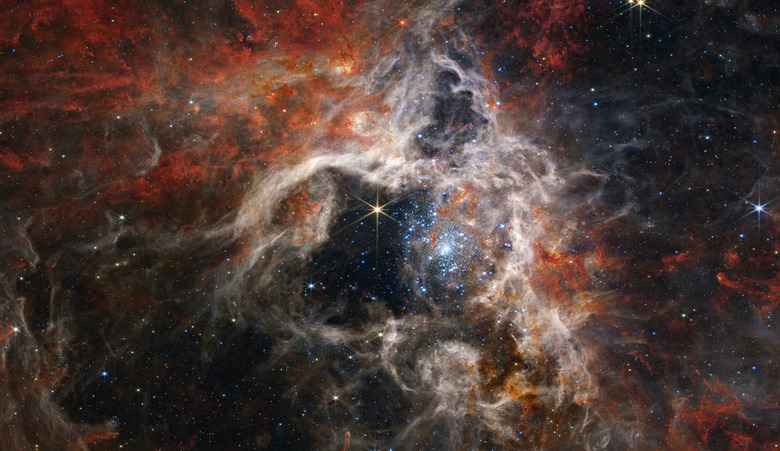7 Things You Didn't Know About The James Webb Space Telescope
The James Webb Space Telescope is a modern marvel when it comes to the hardware and equipment that makes this space-based observatory work. While you probably already know about Webb's spectacular observations of the early universe, there are some secrets you might not have picked up yet. Here are seven things you probably didn't know about the James Webb Space Telescope.
Webb is six times more powerful than Hubble
As a successor to one of the most iconic space telescopes NASA has ever put into orbit, James Webb had a lot of expectations placed on it. Further, because of the scientific missions that NASA and others hoped to undertake with it, Webb had to be powerful. What you might not have realized, though, is it is six times as powerful as Hubble.
It isn't exactly something that NASA has kept secret, but if you haven't followed the telescope's buildup and eventual launch, you might not have realized how powerful it was.
It weighs less than Hubble
Just because it's more powerful doesn't mean it has to weigh more, though. At its launch, Hubble has a mass of 11,100 kg or 24,500 pounds. James Webb, though, only weighs 6,500 kg or 14,300 pounds, according to NASA. That doesn't seem like a big deal, but this Webb secret helps showcase just how far along technology has come, as engineers were able to make lighter material for Webb.
This also doesn't consider the additional weight added with Hubble's various upgrades over the years.
It can almost see back to the beginning of the universe
James Webb has given us some amazing sights since the telescope reached its observation point at L2. However, those pretty pictures aren't the only thing the telescope can do. James Webb is so powerful that it can see back to the early universe — so far back that it can almost see to the Big Bang.
Of course, that's a big part of Webb's main scientific endeavors, and so far, we've found some really exciting data to help us better understand how galaxies formed in the early ages of your universe.
Webb's mirrors aren’t actually made of gold
Another not-so-well-known secret about the James Webb Space Telescope is the fact that its golden-colored mirrors aren't actually gold at all. Instead, NASA's engineers actually used beryllium to create the mirrors. There is gold plating on the mirrors, but the brunt of the hardware behind them is made up of something that can withstand the temperature changes of space much better.
It is the coldest space telescope ever built
Space is often thought of as cold, but a lot of science goes into making sure a spacecraft like Webb doesn't overheat when it is out there orbiting the Sun and gathering data from its observations. Webb's big secret? Well, the way the telescope is designed, it can cool itself down to almost ~7 K, making it the coldest space telescope that humanity has ever built thus far.
This ensures that the hardware in the telescope will never overheat, allowing it to do its job for as long as NASA keeps it running.
It will eventually run out of fuel
This brings me to my next Webb secret. Eventually, the telescope will run out of fuel. As it stands, the James Webb Space Telescope has a finite amount of fuel, which it has to use anytime it needs to correct its course or orient itself to a potential target. Once it is out of fuel, though, there's nothing left to do but let it rot in orbit around the Sun.
It will never return to Earth
Bringing us full circle to one of the last Webb secrets you might not have known. James Webb will never return to Earth. In fact, a video shot after Webb's launch was the last time humanity would see Webb from Earth. While Hubble, in its low-Earth orbit, will eventually fall back to our planet, Webb will remain in a graveyard orbit after its death, orbiting the Sun until it no longer exists.
It seems sad that such a pivotal piece of technology will one day be floating trash, but there really isn't anything else to do about it. Scientists hope to get 5-10 years out of the space telescope, though, which will hopefully be more than enough time to get Webb's successor up in the sky.



